https://www.dropbox.com/sh/p9ixjfnp7biea6f/AADZ6bFBoBb7l2-iusxRwrZwa?dl=0
Category: Insights
Art Nouveau in Turin_Photos by ZHENG JUNYUAN
SAMPLE QUESTIONS for the WRITTEN QUESTIONARY NUMBER 2 – THU JANUARY 19TH, 2017
Dear all, happy New Year and in the meantime here are the sample questions of questionary n. 2 to be held on Thursday January 19th at 1 pm.
HISTORY OF CONTEMPORARY ARCHITECTURE – POLITECNICO DI TORINO
ACADEMIC YEAR 2016-2017
Professor: Michela Rosso; Student Assistant: Rossana Schiraldi
WRITTEN QUESTIONARY NUMBER 2 – THU JANUARY 19TH, 2017
DURATION: 1 hour, from 1pm to 2,30pm
1. Art Nouveau: describe the different interpretations that critics gave of this phase of the history of taste
2. The different European versions of Art Nouveau, enumerate them and explain their different terminologies
3. Art Nouveau: who produced it and for whom?
4. What do we mean by a “total work of art”? Give some examples of architectures that best exemplify this aesthetics concept.
5. National identities, separatism and some versions of the European Art Nouveau movement: give examples of architects’ works that best exemplify this relationship
6. Describe a building at your choice classifiable as LIBERTY and built in Turin: its plan, façade, interior distribution and details
7. The technology or reinforced concrete: give some examples of buildings built around the beginning of the 20th century following this new method of construction
8. 25bis rue Franklin: describe this work with references to the plan, the building structure, the main elevation, the decoration, and the context in which it was produced
9. The problem of architectural language as applied to the American skyscrapers: give examples of built architectures in which builders attempted to give shape to a distinctive native style
10. Explain the new building type of the skyscraper in the scene of the North American cities and their typical urban structure: the zoning codes
11. The skyscraper 1900-1961: the evolution of a building type, and its impact on the European architects. Describe some episodes of this American- European relationship
12. The relation between structure and decoration in the building at 25bis rue Franklin
13. Charles Edouard Jeanneret: his origins and education
14. Charles Edouard Jeanneret and the world of Swiss watches: describe this relationship
15. Charles Edouard Jeanneret: choose a villa among the ones designed by the Swiss architects between 1906 and 1916, and analyze it
16. Charles Edouard Jeanneret: his travels. Explain the importance of this phase for this architect
17. From Charles Edouard Jeanneret to Le Corbusier: explain the important role played by the issue of communication in the work of the Swiss-French architect
18. La Maison Blanche (the white house): why was it considered a turning point in the first career of Jeanneret?
19. Le Corbusier as a writer and publicist: oxymorons, metaphors and neologisms in the work of Le Corbusier
20. Abstract art and modern architecture: describe this relationship with reference to the work of Le Corbusier
21. What do we mean by the term “historic avant-gardes”?
22. Le Corbusier as a writer and publicist: L’Esprit Nouveau, describe its contents and aims
23. Le Corbusier’s ideas about the human dwelling: give at least three examples of housing prototypes conceived by this architect
24. What is the meaning of the expression: “the house as a machine for living” according to Le Corbusier?
25. What is the meaning of the expression: “machine civilization” according to Le Corbusier?
26. Le Corbusier and the idea of the modern city: explain it and give examples.
27. Cubism and Le Corbusier: explain the notion of architectural promenade
28. Mies van der Rohe’s early education and cultural background
29. Mies van der Rohe’s first residential projects in Berlin
30. Mies’s imaginary projects for Berlin, 1920-1921.
31. Mies in America: his reputation in the USA and his professional career
32. Mies’s work: compare three Mies’s German projects with three American projects with respect to plans, patterns of distribution, treatment of fronts, use of materials…
33. The Seagram: the clients, the commission, the project
34. Frank Lloyd Wright and the Stakes of Fames: notes from Bergdoll’s lecture
35. Turin Modern architecture: choose a modern building in Turin among those introduced during the class and describe it.
.
NO WRITTEN NOTES WILL BE ALLOWED FOR THIS QUESTIONARY.
Each of you will be asked to answer to 5 of the questions listed above.
Some pictures chosen among the ones that were projected during the classes will accompany the questions listed above. You will be asked to recognise the object of the picture, either a work of architecture or landscape design, a writing or publication, a drawing or painting, to identify its author/s, to date it, and to locate it.
Art Nouveau in Turin~Liberty~Photos
by Caterina Guglieri
Raby House
Pietro Fenoflio and Gottardo Gussoni







Pecco House
Pietro Fenoglio




Florio House
Gottardo Gussoni and Arnaldo Riccio





Tasca House
Giovan Battista Benazzo
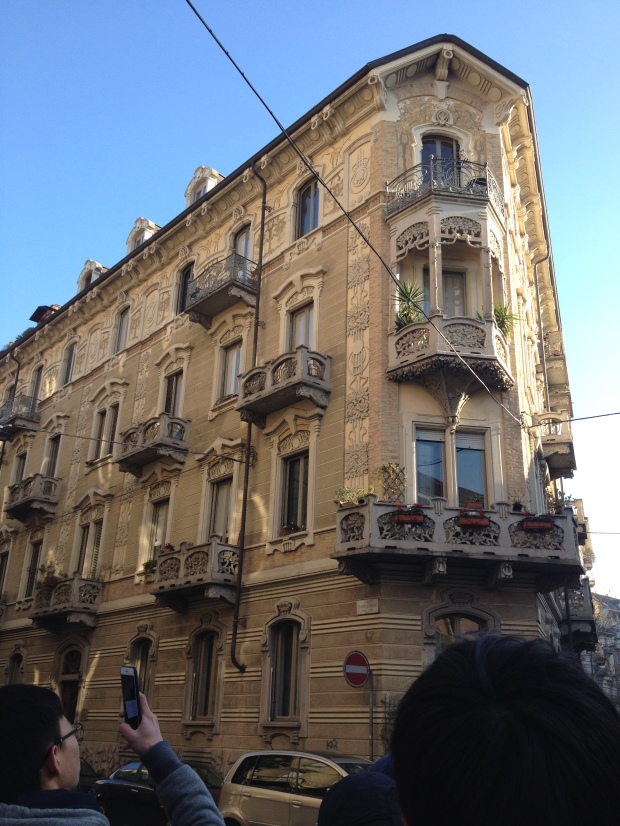


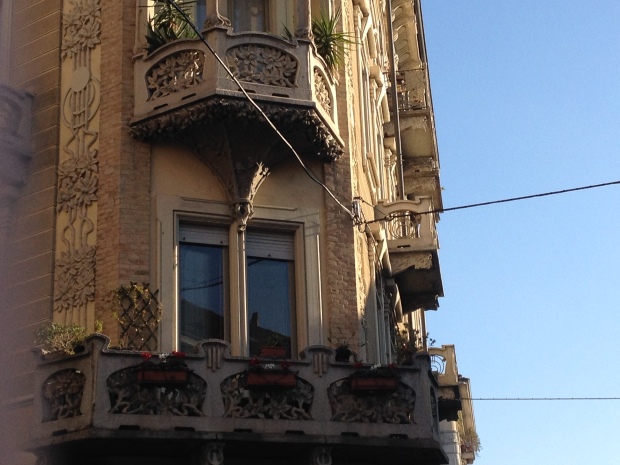
La Fleur House
Pietro Fenoglio

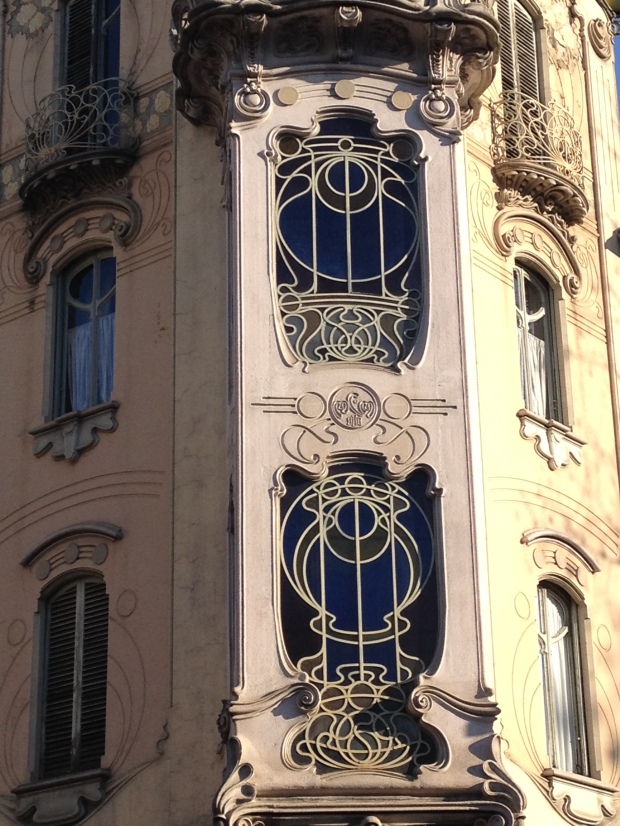


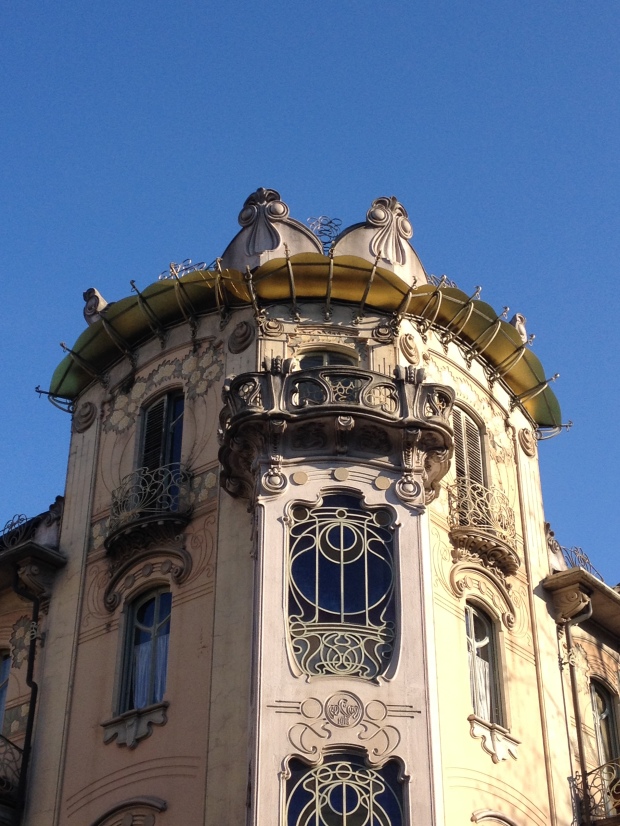

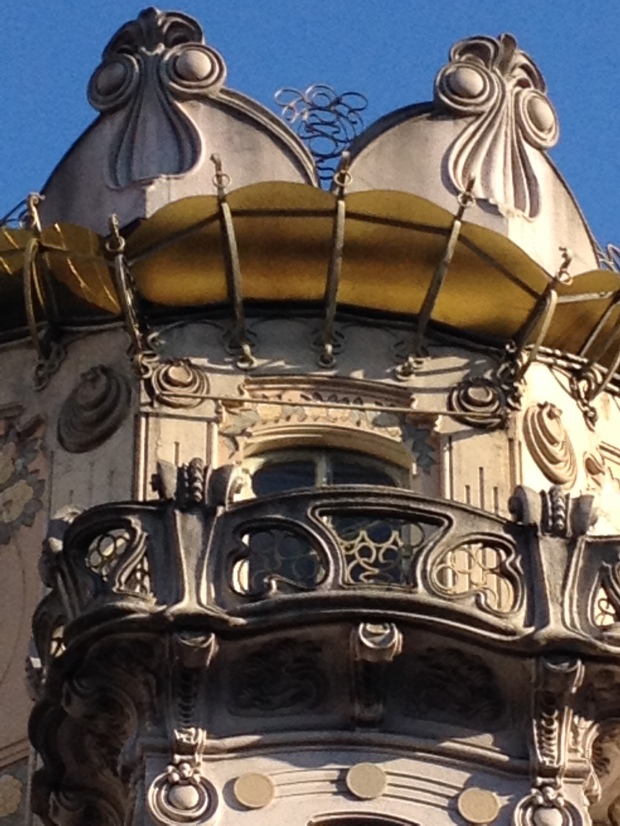
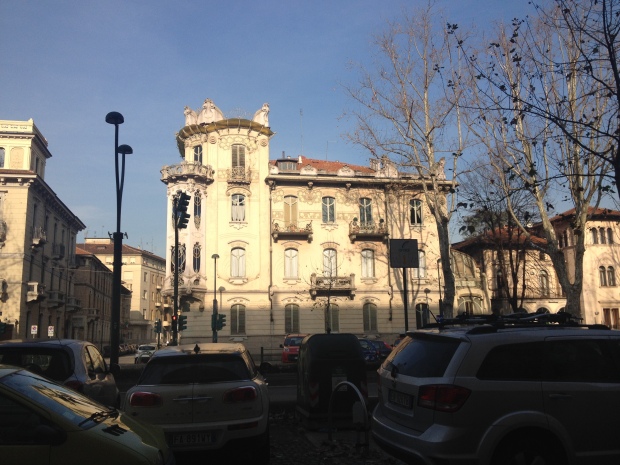
Macciotta House
Pietro Fenoglio








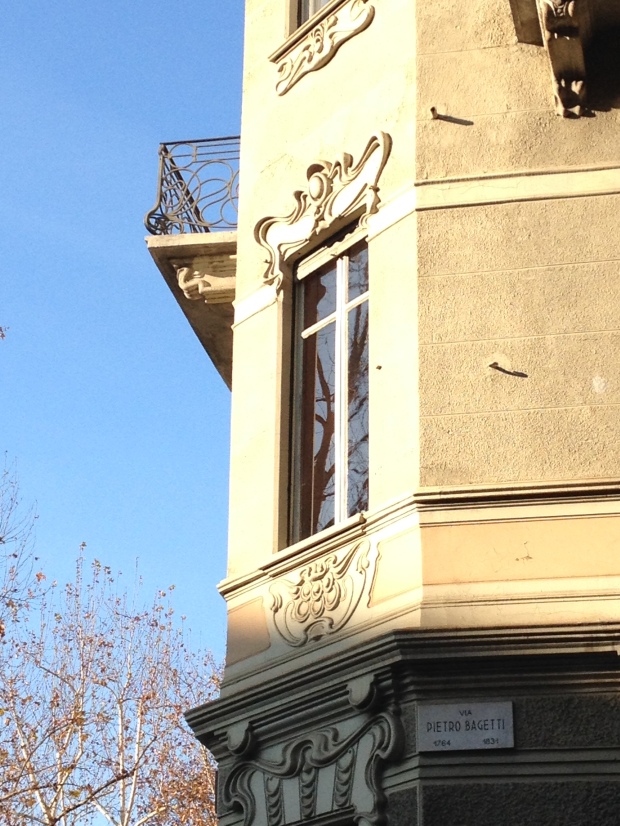

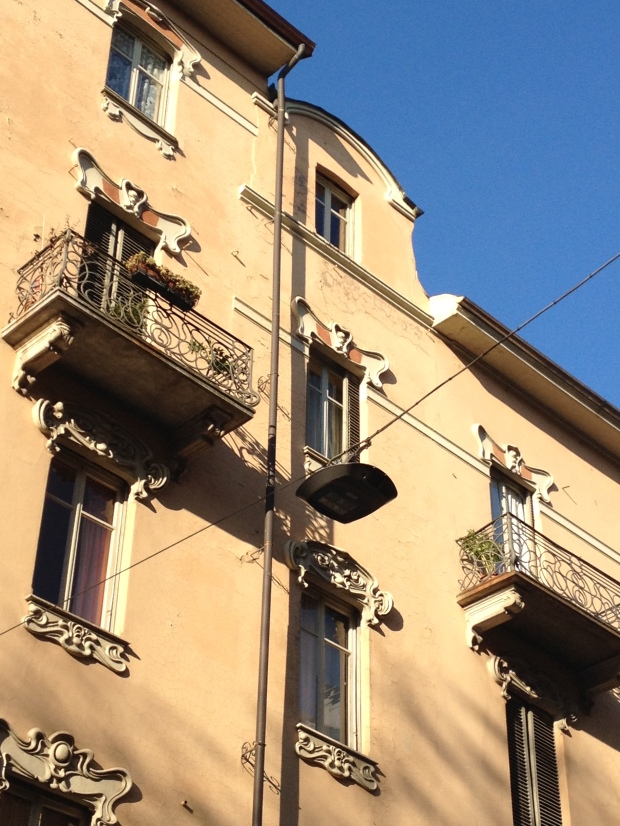


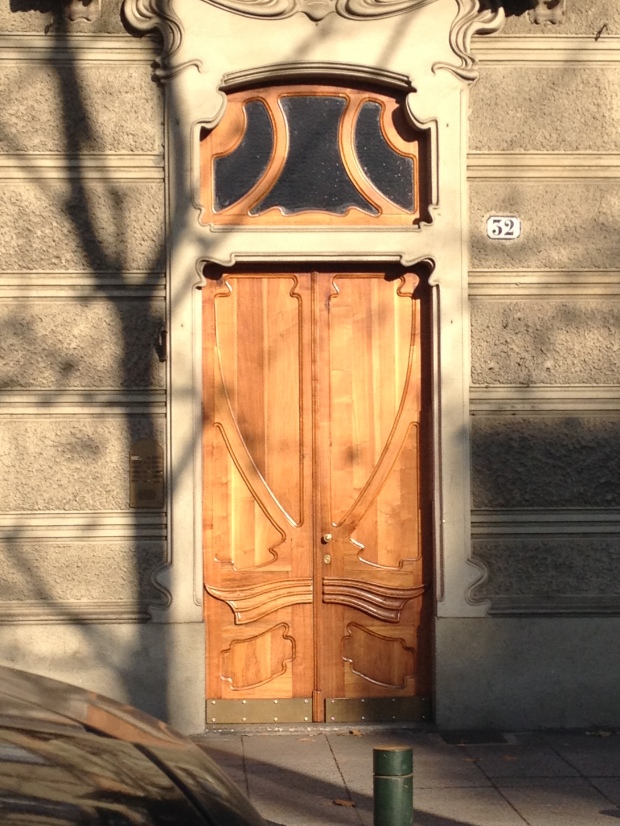
Noro-Borione House
Pietro Fenoglio




Noro-Borione House
Angelo Santonè




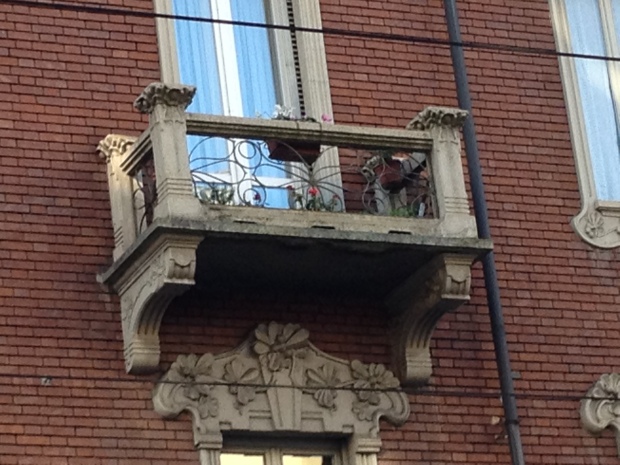
Baloire House
Enrico Bonicelli



Transparency by Colin Rowe & Robert Slutzky: a PDF copy (Chinese Version) and a related board on Pinterest
Transparency is a concept brought forward by a group of scholars at the University of Texas in the middle of the 20th century, who are also called altogether ‘the Texas Rangers’ and are represented mainly by Colin Rowe and Robert Slutzky.
The work Transparency mainly includes first the explanations of this concept and its following theory of ‘literal and phenomenal transparency’, and then the comparison among cubisist paintings and works by Walter Gropius and Le Corbusier.
The following links are useful for learning about this theory. The first is a pdf copy of Transparency (in Chinese), the second is a Pinterest board including most of the related illustrations in the book, to which I have been adding notes as comments according to the author’s opinions.
PDF file: transparency
Pinterest board website: http://pin.it/N6iphRY
–Xiang Li
TOMORROW’s guided tour to Liberty & Neo-Liberty
History of Contemporary Architecture
Academic Year: 2016-2017
Prof. Michela Rosso
Guided tour to Liberty and Neo-Liberty in Turin: Tuesday 6th December 2016
9,30 – 13,00 am
meeting point: 9,30 on time Corso Francia n. 2 (North side, under the arcades)
The tour will be led by Andrea Ronzino, Davide Vero, and Rossana Schiraldi
List of buildings
built around the 1902 Turin Exhibition and Decorative and Industrial Arts
in Corso Francia neighbourhood
1) RABY HOUSE (1901), Pietro Fenoglio with Gottardo Gussoni
Corso Francia 8/b
2) PECCO HOUSE (1902), Pietro Fenoglio
Via Luigi Cibrario 12
3) LA FLEUR HOUSE (1902), Pietro Fenoglio
Via Principi D’Acaja 11
4) FLORIO HOUSE (1902), Arnaldo Riccio with Gottardo Gussoni
Via Luigi Cibrario 15
5) TASCA HOUSE (1902/3), Giovan Battista Benazzo
Via Piffetti 4 / Via Beaumont 3
6) MACCIOTTA HOUSE (1904), Pietro Fenoglio
Corso Francia 32
7) PADRINI HOUSE (1905), Pietro Fenoglio
Via Giambattista Balbis 1
8) GIRARDI HOUSE (1906), Pietro Fenoglio
Via Luigi Cibrario 54
9) NORO-BORIONE HOUSE (1906), Angelo Santonè
Via Luigi Cibrario 33 bis
10) BARAVALLE HOUSE (1906), Annibale Rigotti
Via Vassalli Eandi 18
11) NORO-BORIONE HOUSE (1908), Pietro Fenoglio
Via Amedeo Peyron 14
12) RAMA HOUSE (1909), Pietro Fenoglio
Via Luigi Cibrario 61
13) BALOIRE HOUSE (1911), Enrico Bonicelli
Via Le Chiuse 39
and neo-Liberty …
14) STATUTO HOUSE (1958), Sergio Jaretti / Elio Luzi
Via Le Chiuse 39
15) ASSICURAZIONI GENERALI BUILDING (1959), firm of BPR (Belgiojoso, Peressuti, Rogers)
Corso Francia 2-4
16) PARAVIA HOUSE (1961), Roberto Gabetti / Aimaro Isola
Corso Principe Eugenio 19
CATHEDRALS OF CULTURE – Clip ROBERT REDFORD: Salk Institute — La Jolla, California, USA – HD
Cathedrals of Culture – Wim Wenders, Robert Redford – Official Trailer
The Third & The Seventh: A Collection of Important Modern & Contemporary Architectures Realized by CG Technique
This is a video collection of modern and contemporary architectural masterpieces. All the scenes in this video are not real but modeled, textured and rendered by Alex Roman.
Architectural GLOSSARY, from John Summerson, The Classical Language of Architecture (London: 1963)

HERE is a useful study tool, an alphabetical list of all basic terms of the classical language of architecture.
Pay special attention to the words used during our lecture on classical orders, such as
order, doric, ionic, corinthian, composite, triglyph, metope, intercolumnation, entablature, architrave, frieze, cornice, pedestal, pediment, pier, pilaster, rustication….
1963_glossary_summerson_theclassicallanguageofarchitecture_summerson